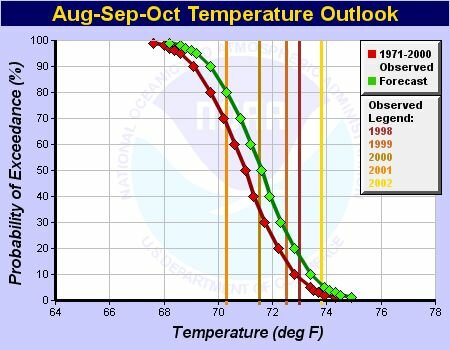One of this blog’s readers commented on this post about how the temperatures would not be as cold this weekend as predicted previously, asking:
Any idea why the Canadian air is stalling out? Is that usually because of high pressure here?
I guess that there are two parts to the answer: first, what causes temperature changes?, and second, why do forecasts change from one prediction to another?
Ultimately, much of the weather in the United States is controlled by the flow of air in the upper atmosphere. This upper air flow is called the jet stream, and there are typically two jetstreams in North America: a polar jetstream that runs across the northern half of the hemisphere, and a subtropical jet stream that runs across the southern half of the hemisphere.
The interaction of the two streams determines much of the weather we get in the United States. If the polar jetstream moves to the south, it gets colder and dryer. If the subtropical jetstream moves north, we have warmer and wetter conditions. These intersections help create the warm fronts and cold fronts that indicate changes in the weather.
For more information on how the jetstreams work, and to see current and predicted jetstream positions, check out the Jetstream Analysis Page provided by San Francisco State University in California.
The second part of your question deals with why it isn’t expected to be as cold as was originally predicted in this entry. The reason why we are not getting well below normal temperatures this weekend is because the polar jetstream did not move as far south as originally estimated.
The extremely cold temperature predictions were based on a long range forecast created by the National Weather Service. The NWS uses several different computer models to estimate future weather patterns, and at the time I posted the forecast, the models they used indicated that the polar jet stream would move further south than what is believed now.
Long range forecasting is a tricky business. Computer models take current conditions, look into the past to find similar circumstances, and predict the weather based on what happened after similar weather in the past. Just like the “any given Sunday” type odds in Football, actual results may vary.
Sphere: Related Content



